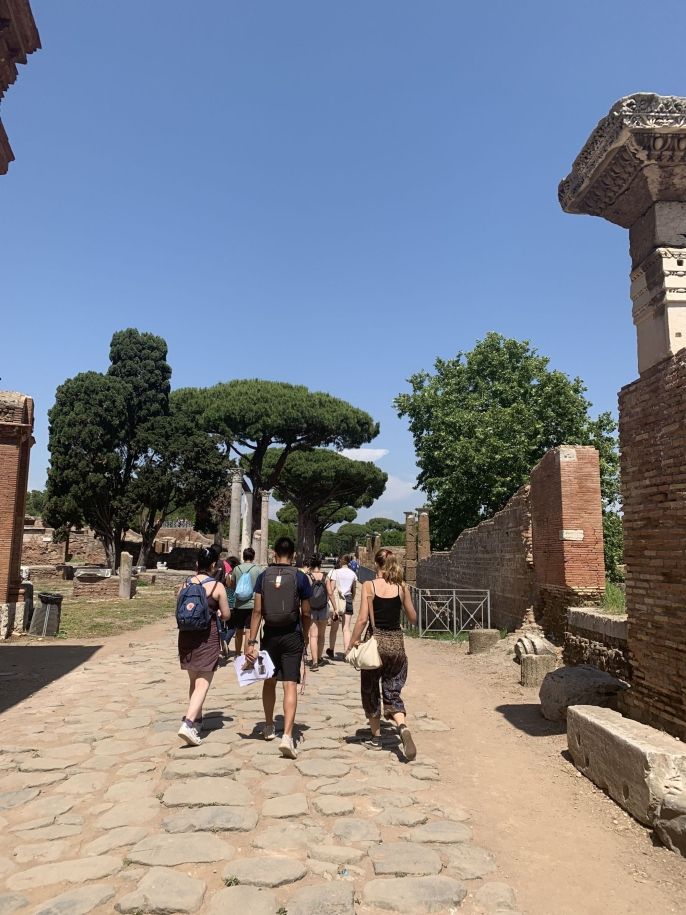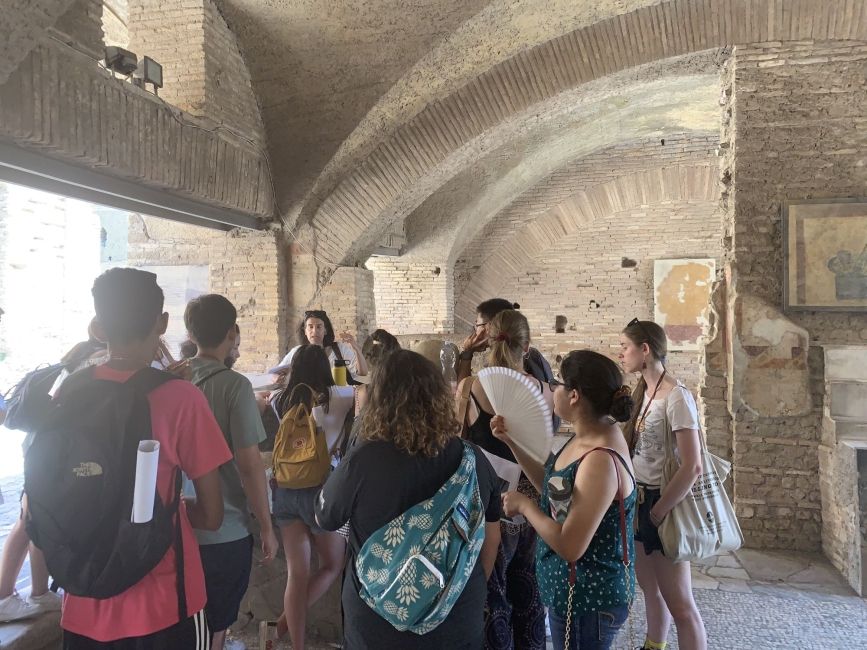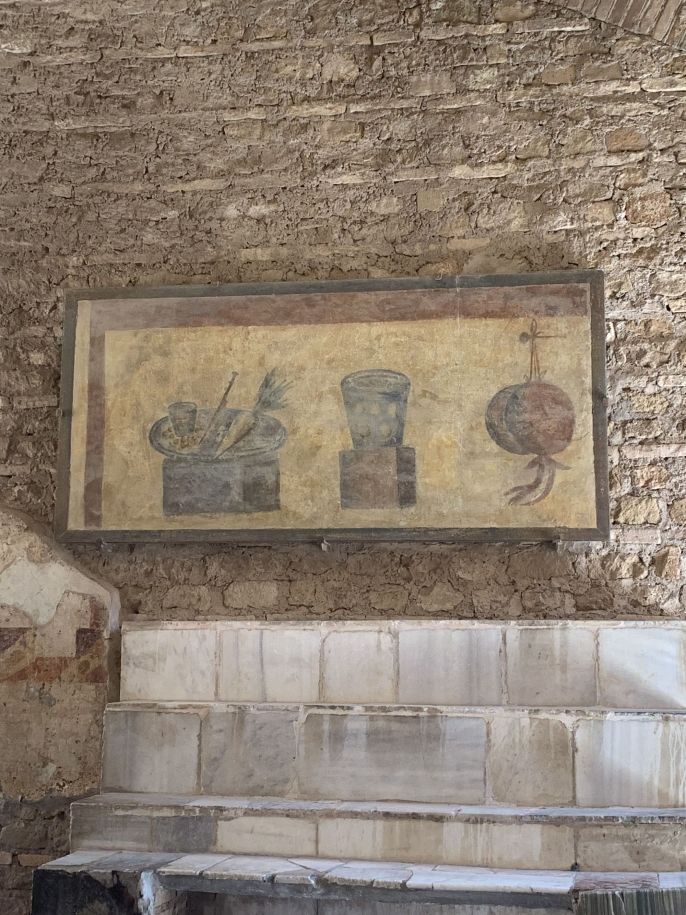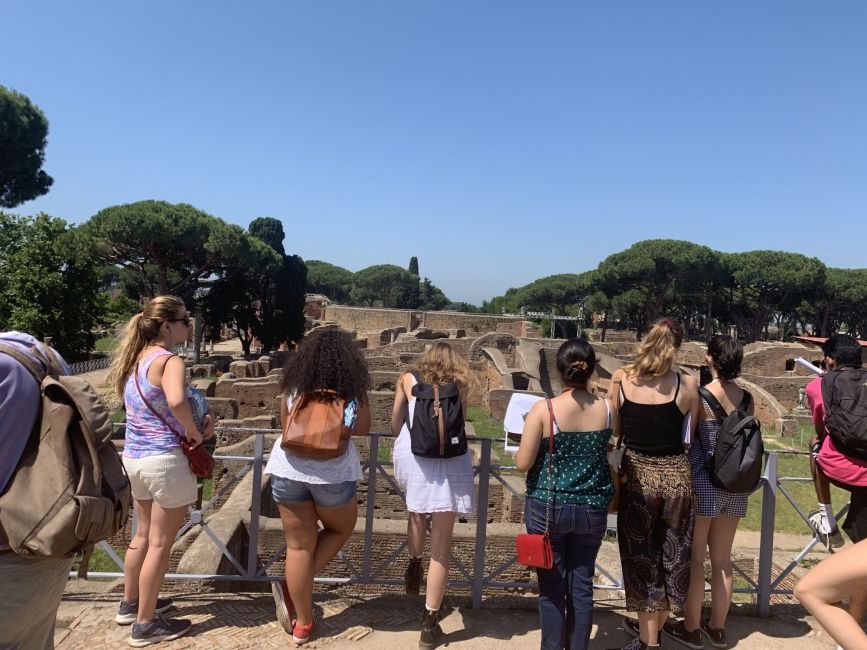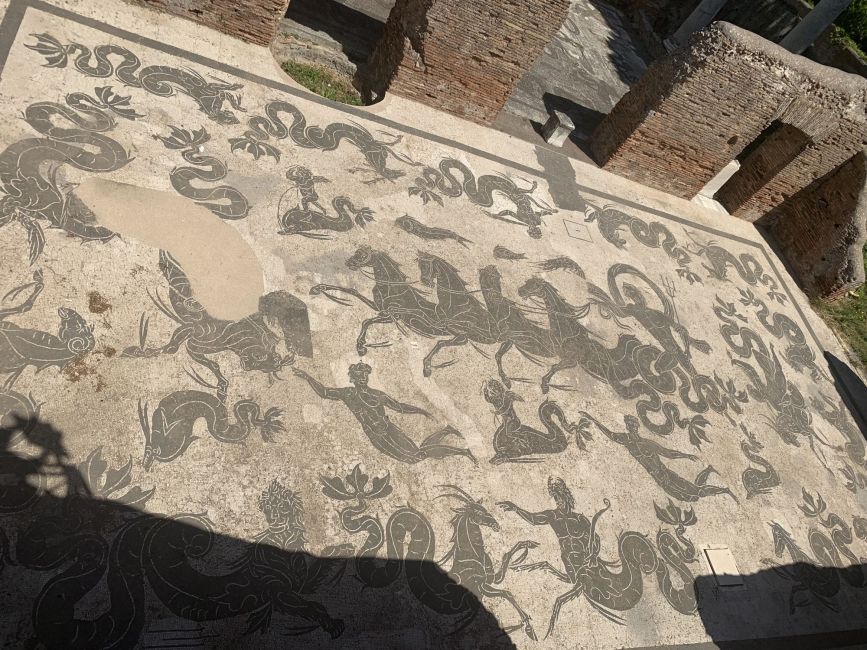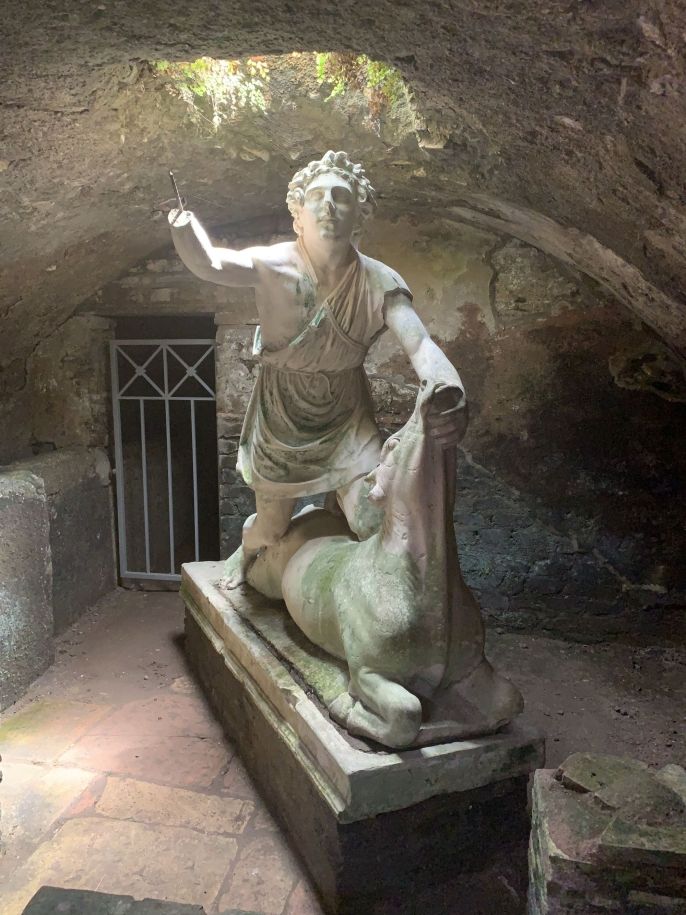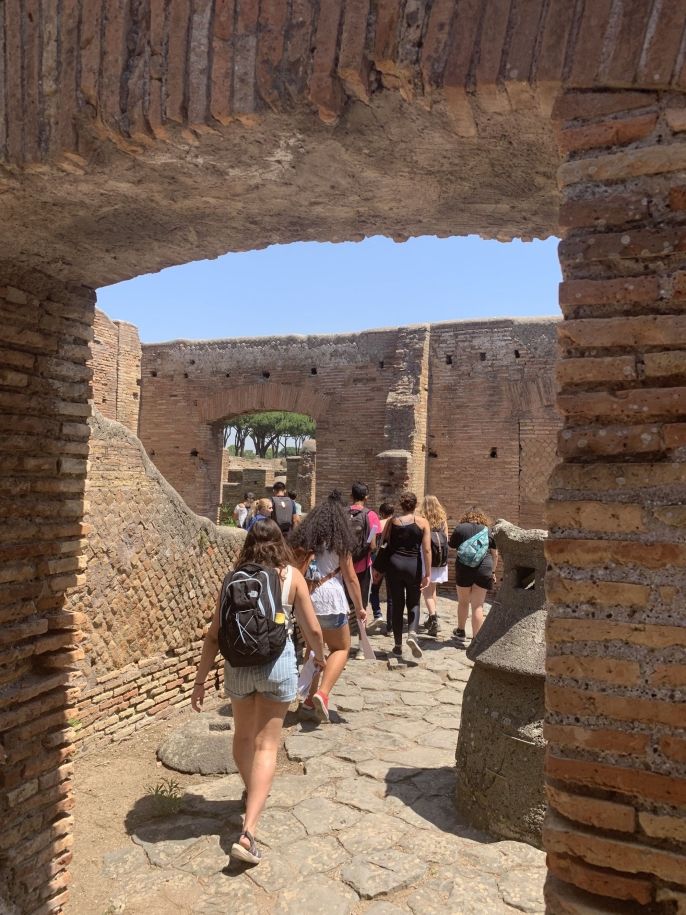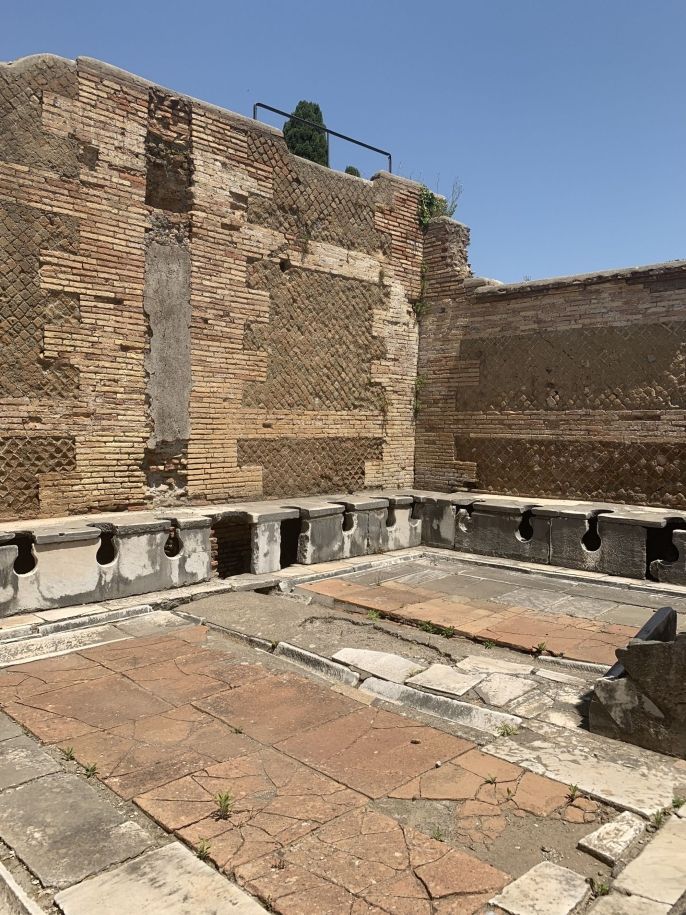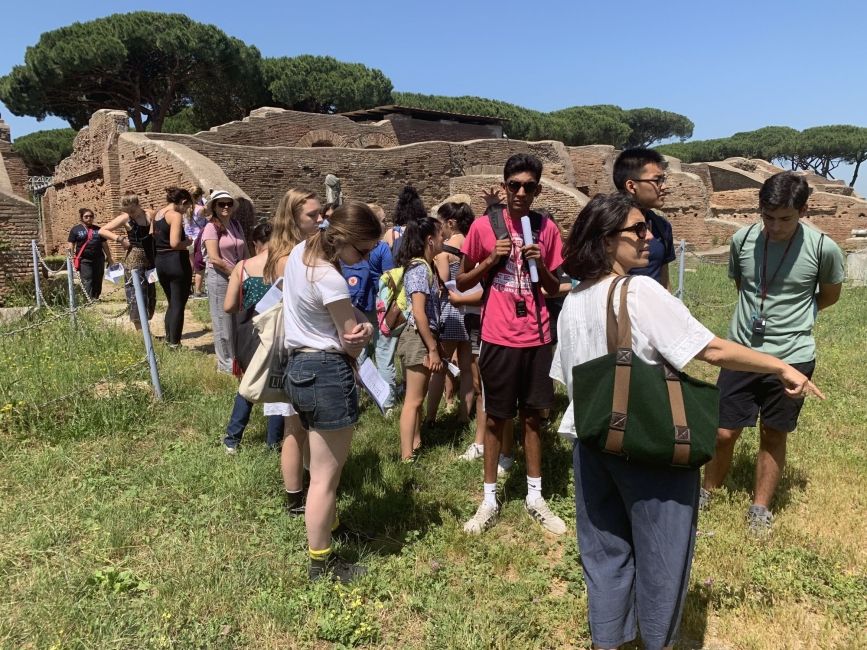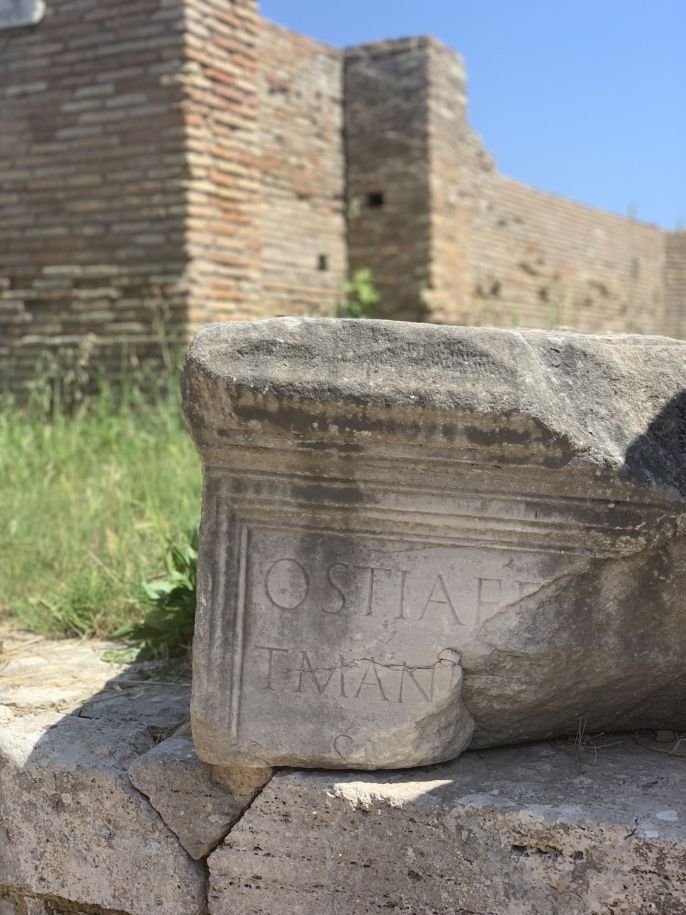Archaeological Exploration, Part 2: Ostia Antica
Today, students continued to learn about Rome through an archaeological lens by visiting Ostia Antica, the site of an ancient Roman port town. We left early in the morning so we could have ample time to walk around and explore as much of the ruins as possible. During the first half of the day, students learned about the overall layout of the town. In order to enter the city, we had to first walk past the necropolis (located outside the city walls for hygenic reasons) and then pass through the Porta Romana, the gate into the city located closest to Rome. There was a large forum just past the entrance, whose the sides would have been lined with bustling shops selling various wares and foods. We then ventured into the Baths of Neptune, learned how ancient Romans would have done their laundry, admired the architecture of the large curia or legal building, and talked about comedies and tragedies while standing in the center of the impressive theatre. Students also got to observe various temples along with an extremely well-preserved granary, complete with the storage vessels and machinery that would have been used at the time. The final (and perhaps most amusing) building we explored before our lunch break was a public latrine, which students learned was a very open and very public place. There were no walls surrounding each toilet, completely different from the privacy we may take for granted in public restrooms today!
After refueling with some panini and rehydrating with plenty of cold water, the students ventured back out onto the site with a task similar to the one they completed yesterday at the American Academy: to work in groups to identify 5 kinds of buildings by exploring the areas and consulting images of objects that would have been found there. Students correctly identified storage containers for olives and garlic, a domus (or house owned by a wealthy family), a secret underground Mithraic temple, a fire station, and a block of insulae, or apartment buildings. This last structure was especially interesting, because it contained two types of artistic production that our students have created or will create in their hands-on workshops: mosaic floors (which students had the chance to produce their own versions of last week), and frescoes (which they will create on Thursday)!
While these two days focused on archaeology may have at first seemed a little out of place in this "Exploring Rome through the Arts" program, I think that after today's excursion and yesterday's class session at the American Academy, the participants have gained a greater appreciation not only for a broader definition of art, but also for the connections that can be made between Ancient and modern Rome, and between Ancient Roman practices and similar routines and objects that they use in their own daily lives.
Related Posts
Lost in Florence: Finding Art in Every Corner
When Sam writes an article, you know the students are waking up early! Let's set aside thoughts of the Colosseum and the ancient Romans for a moment because we’re about... keep reading
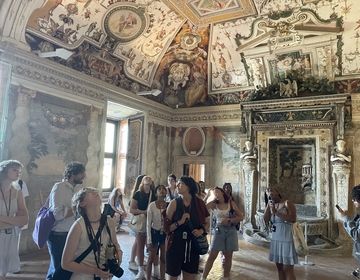
Once Upon a time … in Tivoli!
Nestled in the Italian region of Lazio, the charming town of Tivoli is a testament to Italy's rich historical tapestry and natural beauty. Just a short drive from Rome, Tivoli has been a favored retreat since ancient times, offering a perfect blend of natural splendor and architectural marvels. Among its many attractions, Villa d’Este stands out as a jewel of Renaissance architecture and landscape design.
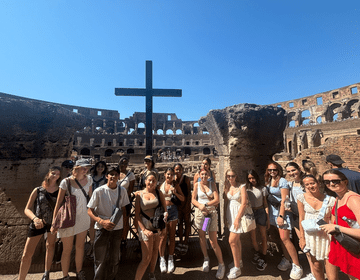
Rome-ing with CIEE: Colossal Adventures at the Colosseum and Forum!
The alarm rang a bit earlier today, signaling the start of an exciting day for the students and their Program Leaders as they embarked on their first bus ride in... keep reading
